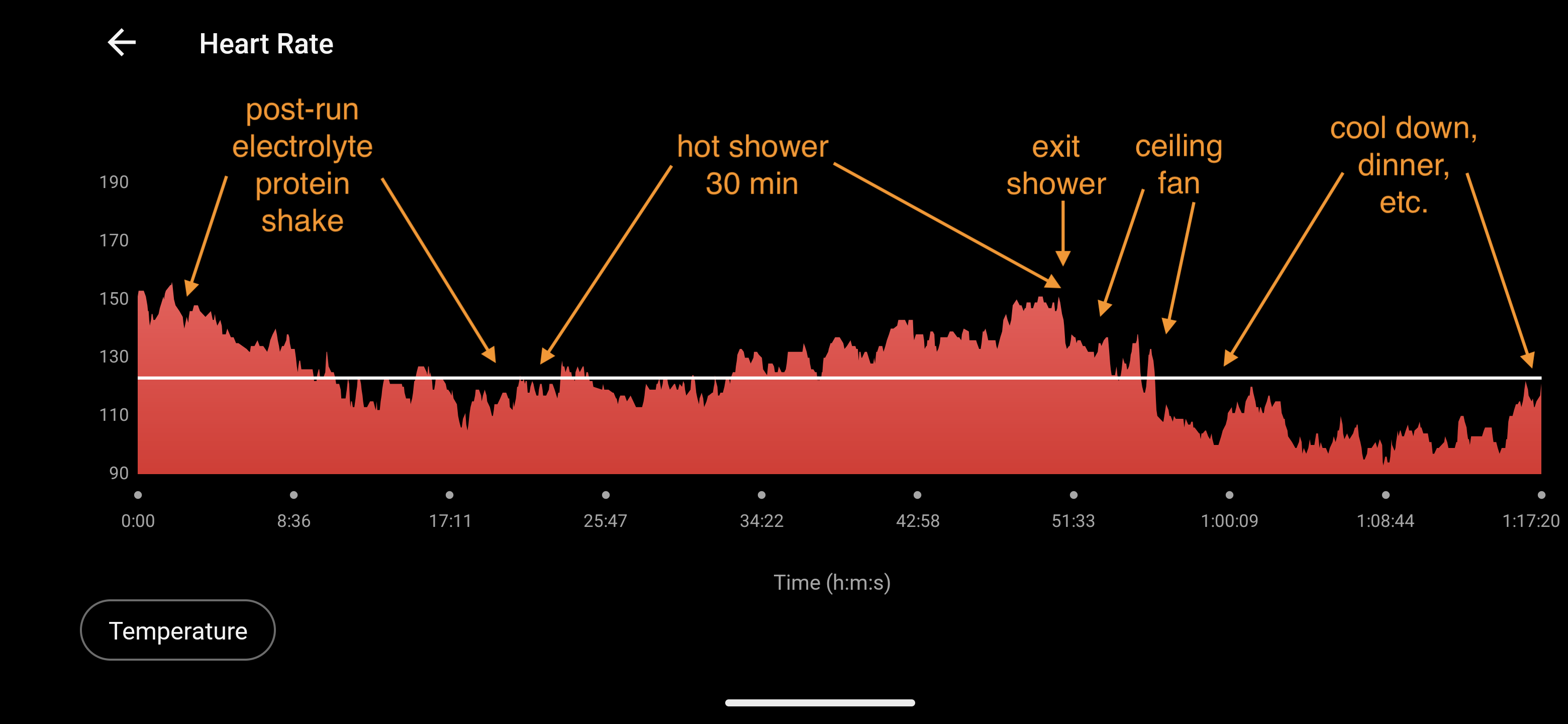A friend recently extolled the many benefits of sauna and he shared some links with compelling information. After some quick reading and watching some YouTube videos, I was curious if other heat soak methods like a hot tub or a hot shower could provide a similar experience to a sauna. If a similar effect can be achieved with a hot shower at home, that seems much more convenient and accessible than a commercial hot tub or a commercial sauna.
Both articles discuss dry vs wet/steam saunas. As the humidity of the process increases, the recommended temperature and duration decrease. This recommendation with high humidity is due to two factors: 1) sweat is less effective at cooling the body and 2) thermal conductivity of the air increases. Both of these factors lead to increased body heating rate compared to dry conditions at the same temperature. Taking humidity to an extreme, a hot tub or a hot shower in a non-commercial setting should be able to produce the desired body heating effect.
"Though their heat generation mechanisms differ, all types of sauna are likely to provide similar benefits as long as sufficient heating, duration, and frequency are achieved. This also extends to other methods of heating, including hot tubs, thermal baths, and hot baths and showers. Even standing outside on a hot day would likely induce a level of heat stress." (Attia, 2024)
That lent some credence to my idea, but I still wanted to test it. Both articles mention the intentional heat stress leads to increases in body temperature and heart rate. Both articles mention heart rates in the 100-150 bpm range. Both articles compare the physiological response to moderate exercise. My smart watch monitors heart rate, so that seemed like an obvious way to record some data for a test.
To maximize the duration of the heat stress, I decided to work out just before taking a hot shower. That resulted in elevated core body temperature and elevated heart rate at the start of the shower. Here is the heart rate data from my run.

Here is the heart rate data from just after my run, through a hot shower, and through a cool down period. I kept a close eye on my heart rate and how I was feeling during the shower. I slowly adjusted temperature as needed and my goal was a gradual increase in heart rate. There was some variability, but I think the trend from the shower start to the end is pretty clear.

It took a long time to cool down from this experiment. I stopped logging data well before I felt cool and before my heart rate returned to a normal resting rate.
My heart rate increased from ~120bpm to ~150bpm during a 30 minute shower. Adjustments to water temperature had a measurable effect on my heart rate, which are visible as several rough steps in the graph. A hot shower is a viable method to increase heart rate and likely corresponding body temperature above baseline. A hot shower is a viable method to sustain elevated heart rate and likely corresponding body temperature above baseline. My hot water heater tank outlet temperature is not as constant as I'd like.
If some of the goals of sauna are elevated heart rate and elevated body temperature, I think a hot shower can accomplish that to some degree. I think a pre-shower workout can amplify and speed up the effect of a hot shower. Or a post-workout hot shower can extend the workout and delay the cool down; I guess it just depends on how you look at it.
Going forward, I may try for just sustaining a heart rate in the 120-130bpm range instead of gradually increasing to 150bpm.